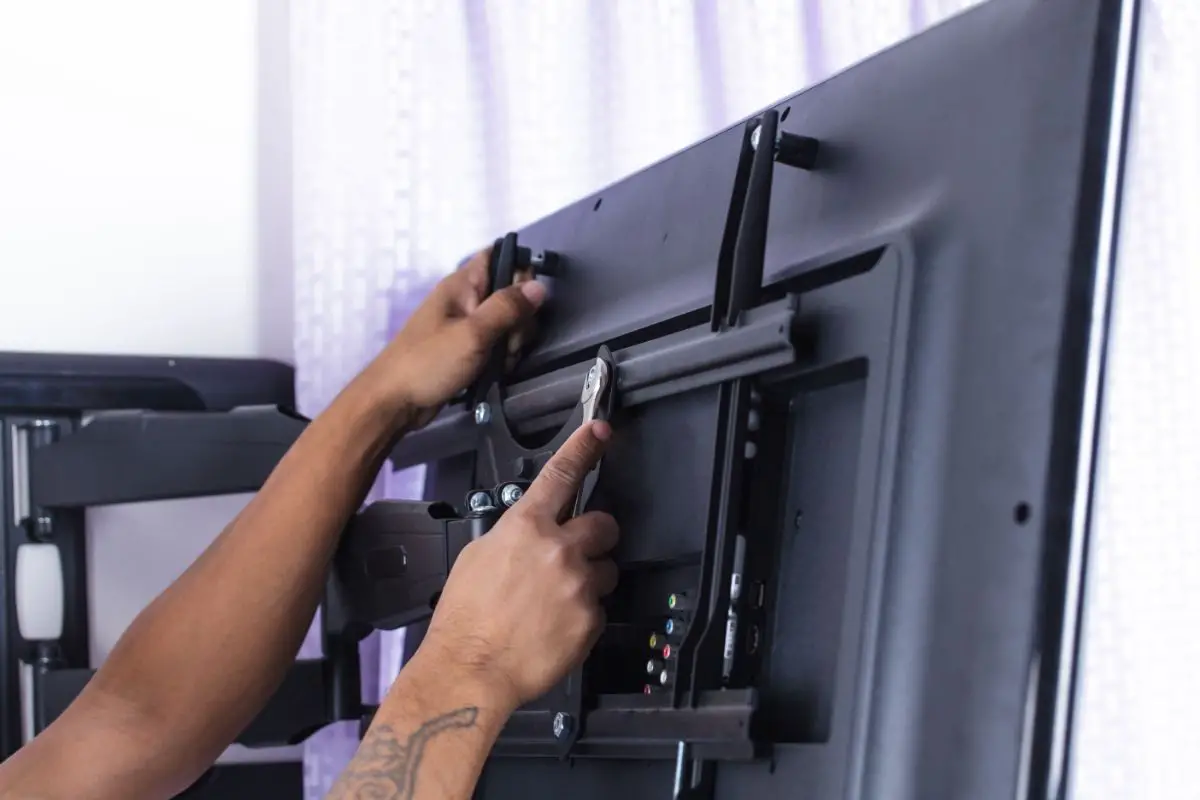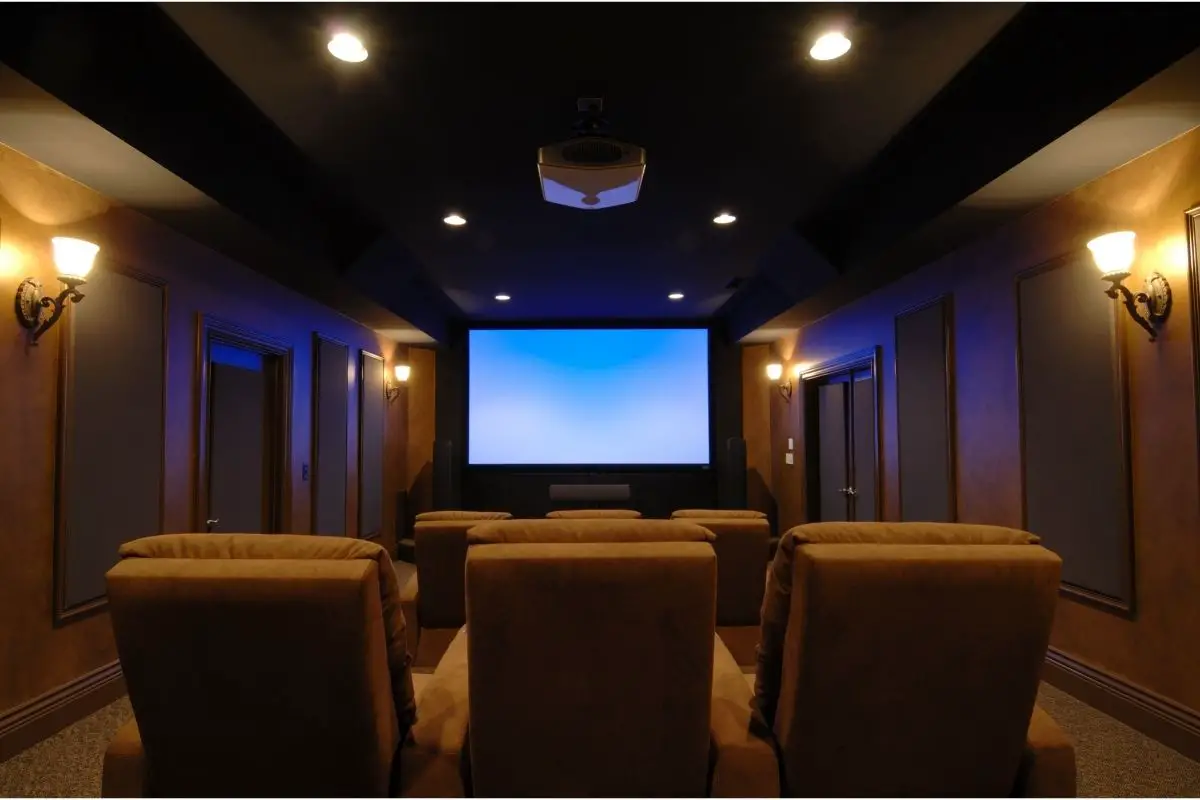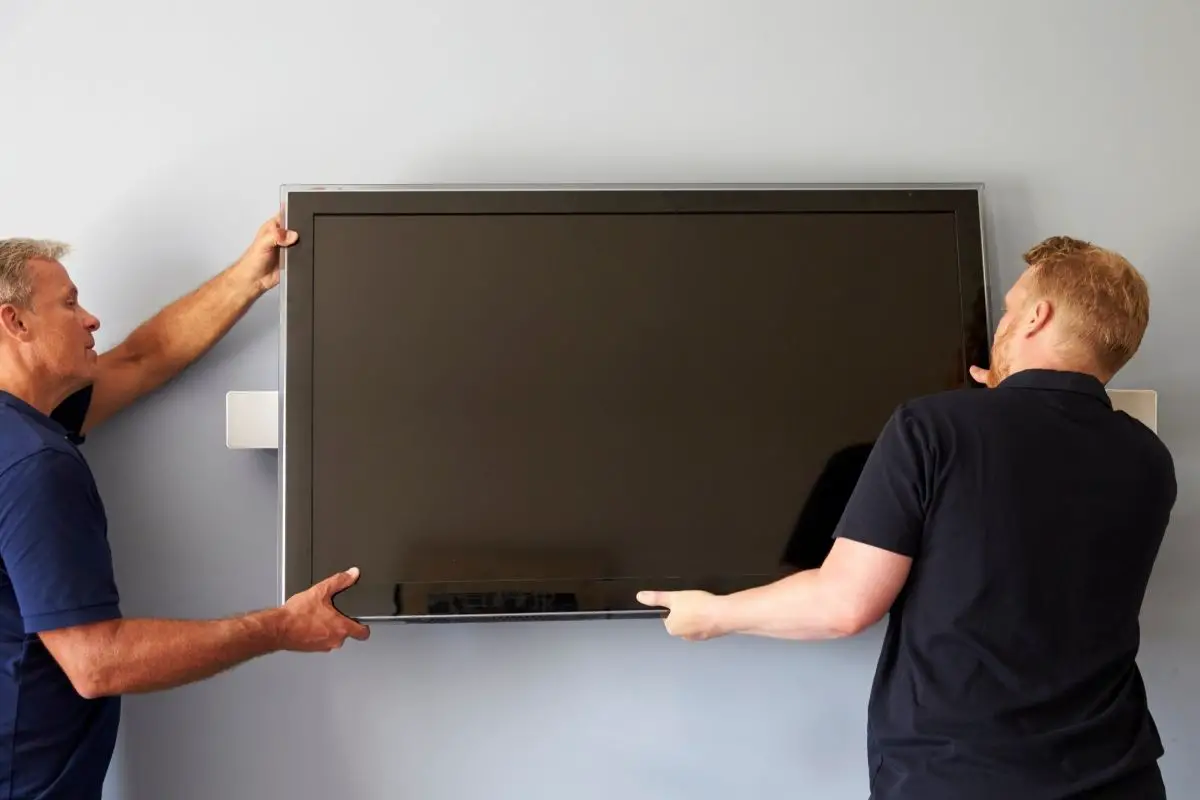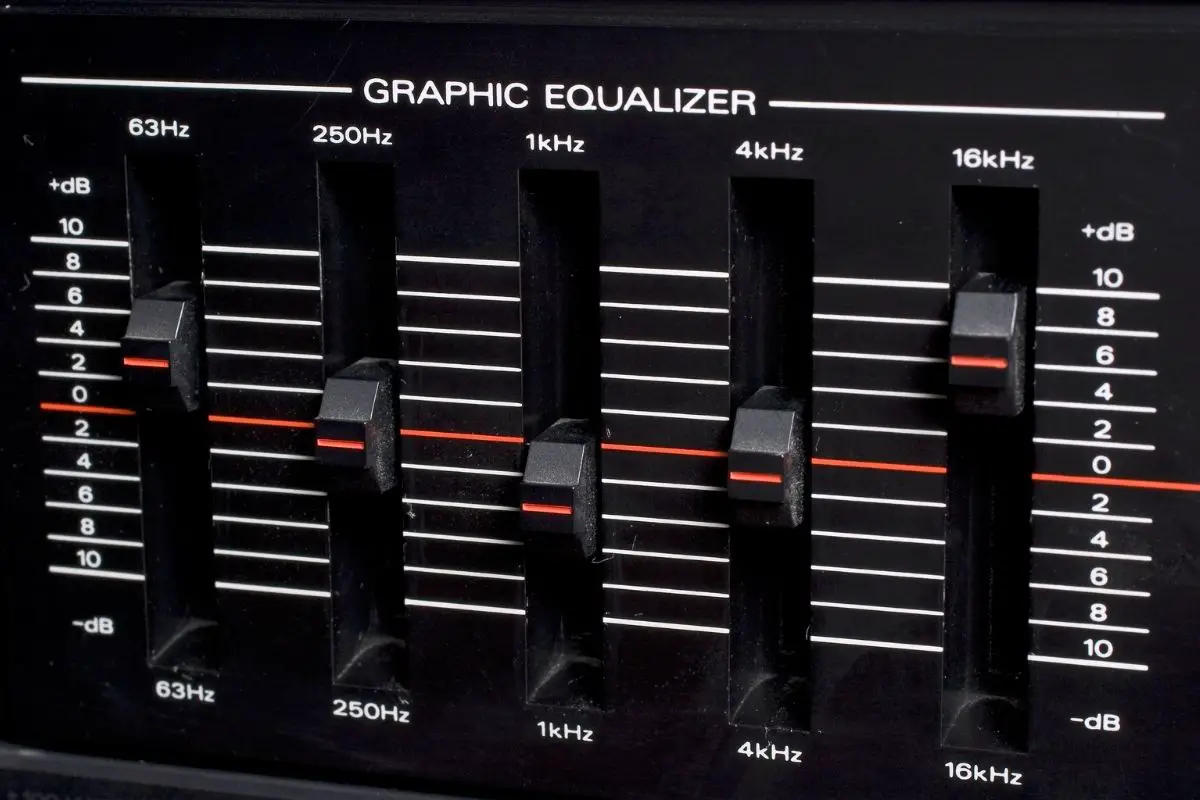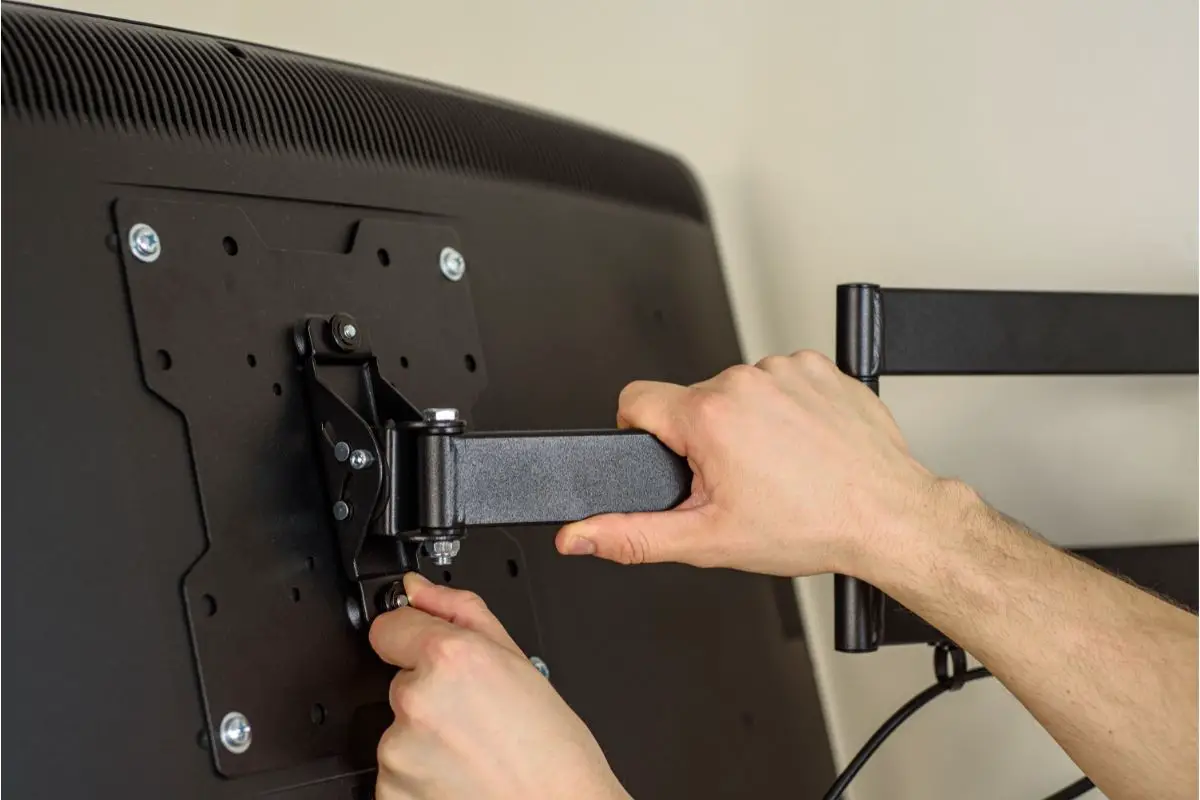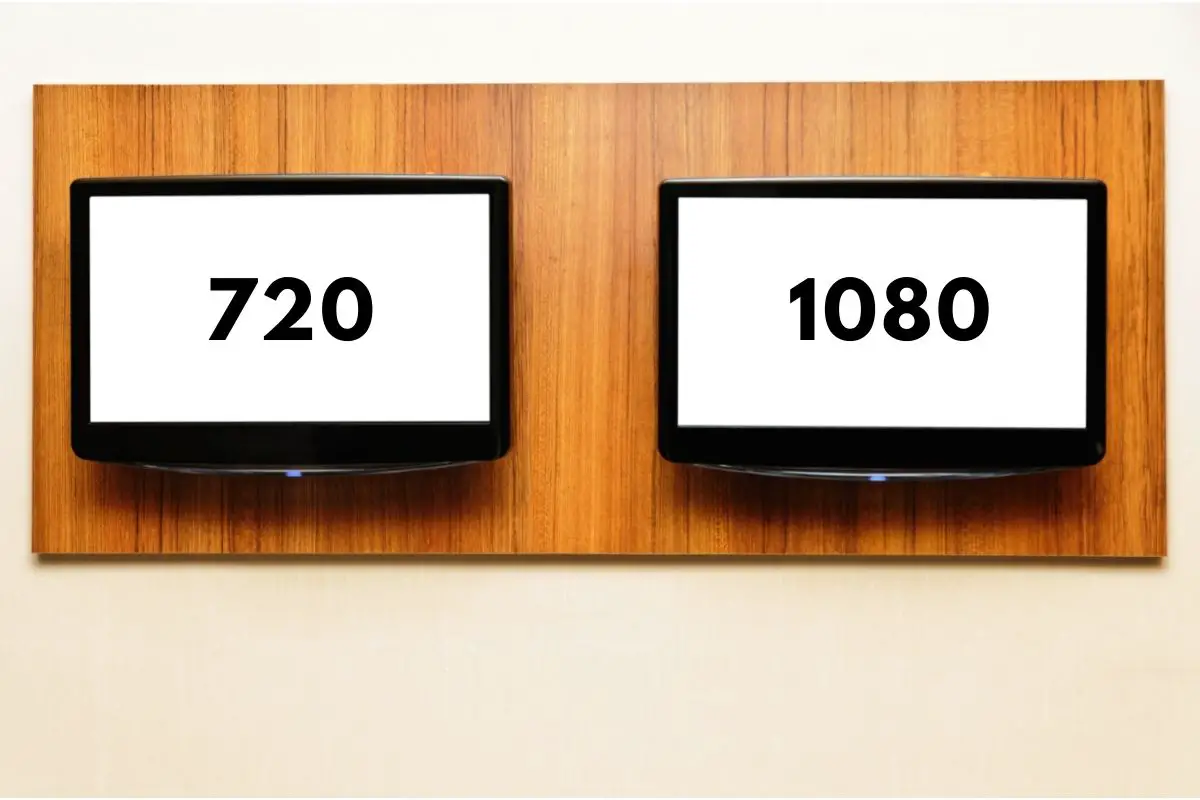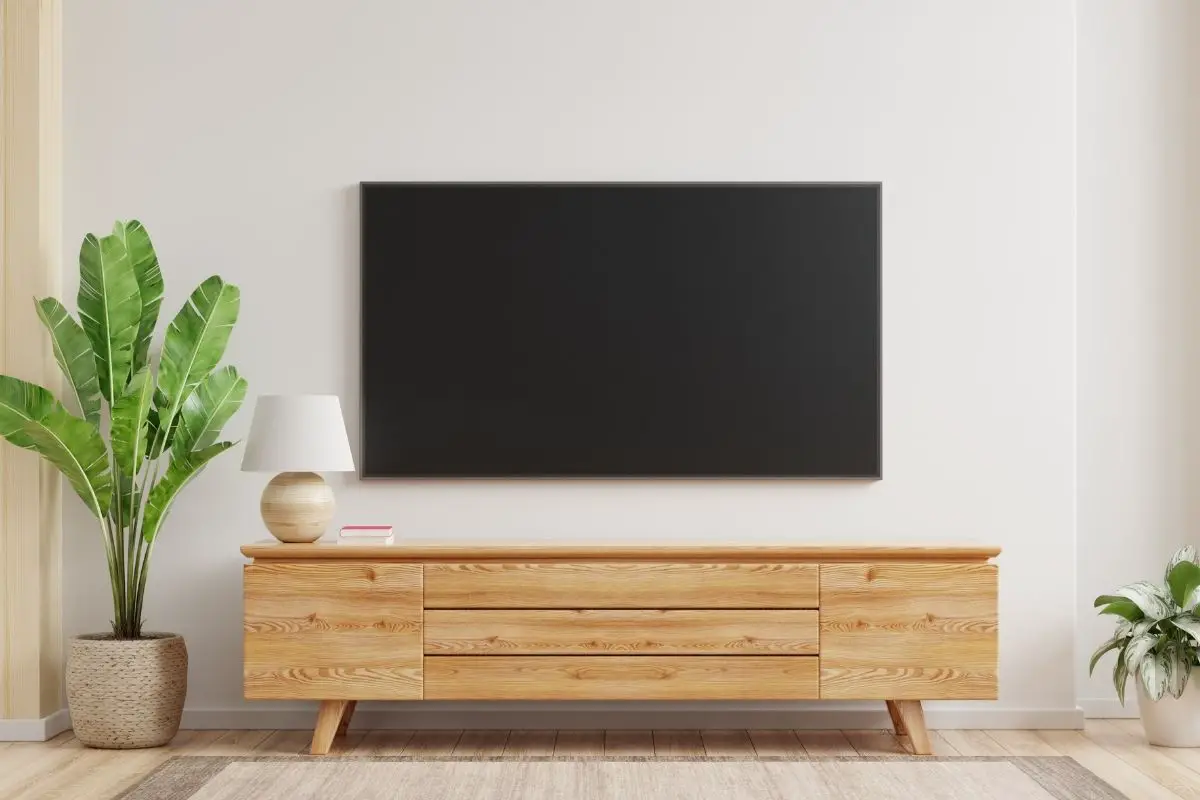Most of us would love to hang our TV from the ceiling or even place it on top of a bookshelf.
It looks fantastic and allows you to really open the room up that it’s in. Not only that but it saves valuable space!
But what if you want to mount it on a stone wall or any other uneven surface? How should you go about it?
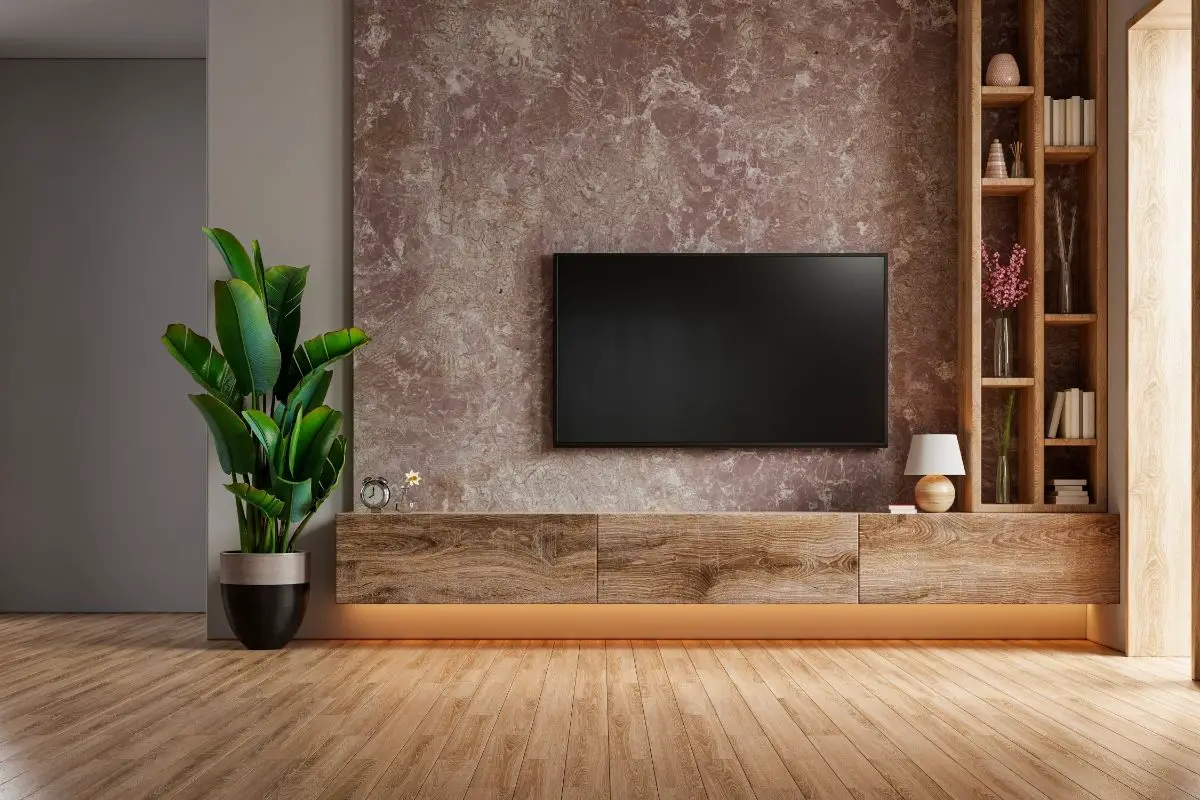
If you don’t have a flat surface to put your television on, then you might have to look into mounting options. But don’t fear!
With TV’s becoming lighter and lighter, and there being several ways to mount TVs on walls, it really couldn’t be easier to hang your TV up wherever you like.
But remember that certain methods can come with their own drawbacks.
Mounting a TV on a stone wall or uneven surface can seem daunting at first, and generally you’d be best by seeking some professional help or advice as every different surface will have their own unique challenges.
But by following this general guide you’ll be able to give yourself a good start on this project, and if you need any extra help at any point you’ll understand what you’re doing.
As well as this, there are loads of different types of mounts available, and each has their own pros and cons which will allow you to decide what’s best for your home.
So let’s take a closer look at them in this article.
What Are The Benefits Of Mounting A TV On Your Wall?
Mounting your TV can be done for many reasons. For example, you could do it because you want to make the living room feel bigger than it is.
You could also do it because you want more storage space in the room. Or maybe you just like the way it looks.
Whatever the reason may be, there are quite a few things to consider before installing a TV mount.
What To Know Before Mounting A TV On An Uneven Stone Wall
The first thing to remember before starting to mount your TV is to remember that this isn’t just some object, TVs are incredibly lightweight and fragile, and it’s important to treat them gently whilst mounting them or you might go through the trouble of doing all the work and then find your device is broken.
As well as that you need to make sure it can be seen and it fits the space that you’ve designed for it!
With electronics, you’re always going to have wires too.
So it’s important that you plan out where exactly those wires are going to go before you begin mounting anything.
Just be confident and sure with what you’re doing and you’ll be fine!
As a side note also, it’s a good idea to think ahead about wires that will come from your TV, maybe you’ll pin them to the wall and paint them to disguise them, or you can hide them in the wall itself – it’s completely up to you, but it’s always a good idea to think ahead.
It’s also important to remember that many methods will require drilling holes into the stone wall.
This can be done by hand or using a drill machine, but if you’re not comfortable doing this yourself, there are companies that will do the job for you, and you get to have the peace of mind that your TV will be installed properly.
And then there’s the material of what you’re hanging on.
If you’re hanging your TV on a fireplace, it’s good to identify what kind of fireplace it is, as gas or wood can cause specific issues when not considered properly.
If it’s a stone fireplace it’s good to check to see if the stone is hollow, that way you can adjust your mounting method beforehand to ensure your TV is properly secured.
After you’ve worked all of this out, you need to decide the mount that’s best for you.
For a larger more open room it’s never a bad idea to go for a mount with a movable arm, to add some flexibility into the mix.
There’s many different mounting options available to you, so make sure that you do your research before you begin.
Can The Type Of Stone On Your Wall Hold Your TV?
You may also want to consider whether your stone wall can support the weight of your TV.
Some stones such as marble and granite are very heavy and installing a TV into them could cause damage to your wall.
You may find that you can get away with hanging your TV from a much easier to install wooden beam instead.
It’s also worth noting that if you’re planning to use a suction cup mount, you need to know how thick the stone is.
The thicker the stone, the harder it is to attach the suction cup and vice versa.
Tools
It’s also a great idea to gather some pretty universal tools together to make sure you’re not going to get halfway through your job and get caught empty-handed, so here’s a list of things you should get together beforehand:
- Drill bits
- Screwdriver
- Hammer
- Pliers
- Stud Finder
- Tape measure
- Pencil
- Level
- Safety glasses
- Work gloves
- Caulking gun to fill in any errors you might make.
After all of this, you’re finally ready to begin mounting your TV.
Stud Finders
Stud finders are important tools when mounting a TV as they’ll give you the confidence to mount your device without doing any damage to the unseen parts of your house behind it.
Stud Finders effectively detect whatever materials are behind the wall that you’re working with, and I’d always recommend using one of these great devices before you commit to whatever DIY project you’re doing because they can save you so much unnecessary trouble.
They’re generally pretty inexpensive these days, and you can even download them onto your phone if you’d prefer that.
In the interest of safety it’s great to have one of these around though, or any device you’d prefer to use to detect fragile parts through a wall.
Mounting A TV On An Uneven Stone Wall With A Drill
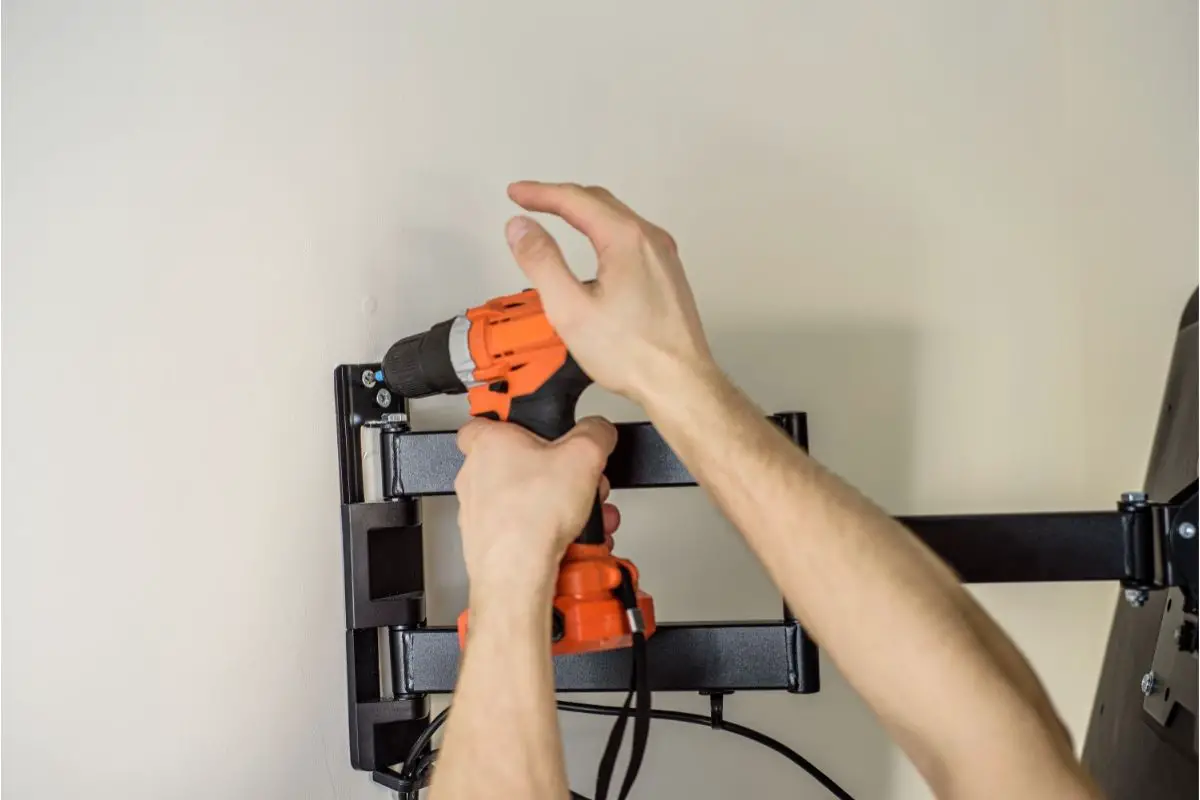
The first step in mounting your television is to remove any loose items around the area that you’re working in. Then take a look at where you want to place your TV.
Make sure that the spot you choose has enough room. Next, mark the location of where you want to put your TV on the wall.
Once you’ve marked the spot, you can start removing any existing materials from the wall.
Remember to wear safety goggles when you’re working near electricity or any debris.
After you’ve removed everything from the wall, you’ll have to clean any mess to make sure that it doesn’t get in the way during a more fragile part of the mounting process.
Just before you begin – whenever using a drill make sure you don’t drill too far.
Especially when working around your TV, drilling too far can damage your device, and can sometimes completely break the screen, so it’s always a good idea to use your drill for the bulk of the work, and tighten things using a screwdriver for that added safety.
Also make sure you’re constantly checking the design is precise by using your spirit level to account for any sloping.
Now for the fun part! Take a look at where you plan to hang your TV and make sure you take a mental note of it.
Mark the location if it would make it easier for you.
Next you’ll want to check your TV mount and make sure it’s appropriate for the TV you’re using, and follow their instructions specific for your TV as the 4 screwing points in the back of your TV is always going to be slightly different.
Remember though, you’ll always be screwing in the mount from the back of the TV first.
Once that’s done you can temporarily attach the wall mount to the TV bracket and measure from the bottom of the TV to the bottom of the bracket, to make sure that your TV is lined up perfectly so that you can nail this the first time.
At this point you should’ve already checked to make sure that the placement you’ve marked out is perfect with no direct wires or anything else fragile immediately behind your TV.
And so we’re ready to get onto the next step.
Hold your TV bracket up where you’ve marked and make some extra markings on each corner point for where you’ll be drilling the bracket into the wall.
Each of these 4 points will be where you’re drilling so make sure to double-check you’re happy with the positioning before drilling these 4 symmetrical holes into your wall.
Next you’re good to screw your bracket into place, and make sure you only drill your screws in slightly, so that you can save some wiggle room to adjust before you tighten them.
Once they’re tightened you can get your TV and place it onto your bracket (that might require some help if you’ve got anyone around) and there you go!
For some brackets you might need an extra securing step at the last stage there, but those are the basics.
Mounting your TV using a drill can almost seem old-fashioned when there’s so many easier and just as stable options, but if you do choose to mount your TV using a drill and brackets, there are very few options available that offer the same support and durability that this will, and with the amount of brackets with specialized features such as extendable arms, and space for multiple TV’s this is going to be the only way to do that.
Just remember that this process is generally hard to reverse, and once you’ve got your TV in place it’s a lot more difficult to move it than maybe some of these other options on this list.
Magnetic Mounting
So what if you don’t want to drill holes in your wall? Maybe you’re not sure about the TV position, or just don’t want to compromise your wall after your TV is gone.
There are plenty of methods to mount your TV on a stone or uneven surface without using drills, and the first one we’ll talk about is magnetic mounting.
This is probably the most common type of mounting used for televisions without using a drill, and It works by using magnets that stick to metal objects such as shelves, cabinets, and appliances.
The magnet sticks to the back of your TV and attaches itself to the metal object. It’s incredibly easy to do, and setup can be easy with very little work.
And the best part is that you won’t be leaving any ugly drill holes if you decide to move your TV elsewhere.
Adhesive Mounting
Probably the simplest method discussed in this list, just like how you can hang a painting or a photograph you can simply stick your TV on with an adhesive set.
Due to modern day lightweight flat screen TV’s you really don’t need as tight a grip as you may expect, but obviously will need to check beforehand that your adhesive will be able to support the TV for a long period of time, because obviously you don’t want that going wrong.
Setup is incredibly easy too, probably the easiest on this list just because all you’ll be doing is taking your adhesive tape and sticking your TV to it onto the wall.
Remember to measure out what you’re doing though, and make sure you’re happy with the position before you finalize your decision.
Whilst effective and simple, adhesive mounting can lead to permanent aesthetic damage on your wall supporting the TV, so make sure you’re happy with the placement for a long period of time before you stick it down.
And please make sure it can support the weight!
Rail Mounting
Similar to mounting with adhesive, rail mounts are surprisingly similar in the fact that they are typically used to hang lightweight pictures and paintings around your house.
But rails are both versatile and robust these days, meaning that it’s really easy to hang your TV from a rail if you don’t want to drill anything into the wall itself.
This is of course easier because of how lightweight TVs are these days, and really doesn’t leave any marks on your supporting wall.
In fact, you can adjust these rails quite easily if you’re someone that likes change.
As with adhesive it’s important to check that your rails can hold the weight of your TV, and you may want to get some professional help with this one, as finding rails specific for mounting TV’s can be quite difficult, and you really don’t want to be getting the wrong ones.
But if you can find them, they can come in any color you want. And can really fit whatever theme the rest of your living room has going for it.
If customization is your bag then take a look into rail mounting!
Hybrid TV Stands
Maybe rather than hanging the TV on the wall at all, you’d simply prefer just to have a stand that fulfills the purpose of hanging a TV, but you don’t need to go to the bother of actually hanging it.
Hybrid TV stands are fantastic for this as they really couldn’t be easier to set up, but they still give fantastic support for your TV and offer the same amount of viewing ease and take up a very little amount of space.
If I was choosing to mount a TV I would certainly consider just buying a hybrid stand instead, it’s so much easier and there’s practically no risk on stands you can buy online.
Hardwall Hangers
Hardwall hangers are incredibly simple and leave a fantastically clean and aesthetically pleasing look to your TV, especially when working with difficult surfaces or stone.
These hangers are really simple brackets that’ll dig into whatever surface you want to mount them on, and then can support a good amount of weight once they’re in place.
The main issues with these though are their lack of versatility once they’re placed on the wall.
And they may not be available if your TV is too heavy or big for the hangers to support.
If you’re in the correct specifications however, few options really look as clean as the hangers do when you’ve mounted them correctly.
Final Thoughts
Overall, Mounting a TV on a surface that isn’t flat or made from typical drywall can be a difficult task, and a potentially expensive one too when things go wrong.
This is why this article has been discussing other options to just mounting your TV in the traditional drill format on walls like these.
It’s always advisable to get some professional help when dealing with something that can be as costly as mounting a TV, especially on one of these uneasy surfaces, but there’s a whole host of intuitive methods to mount your TV without using permanent screws and metal brackets.
And these come with the generally added bonus of being able to reposition so easily that you could change it over in less than an hour’s work.
We hope that this guide has been helpful at least to show you some of these different options, or just to give you some clarity on how stressful it can be working with a more difficult surface like stone or brick.
But like all DIY projects, it really is satisfying to see the finished product at the end of your hard work.
- How Do I Connect My Samsung Soundbar To Bluetooth? - February 5, 2024
- How To Connect Soundbar To TV With Optical Cable? - February 5, 2024
- How to Choose the Right Audio System for Your Home Theater Setup - April 25, 2023

